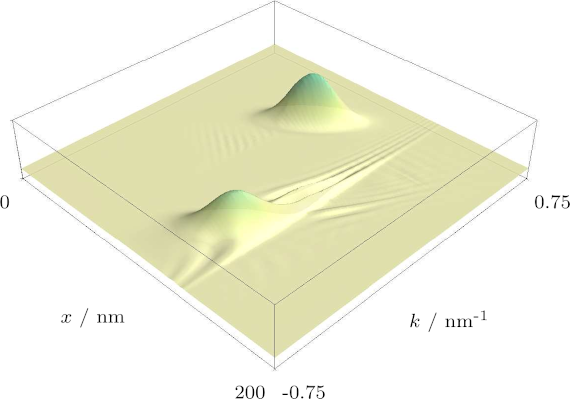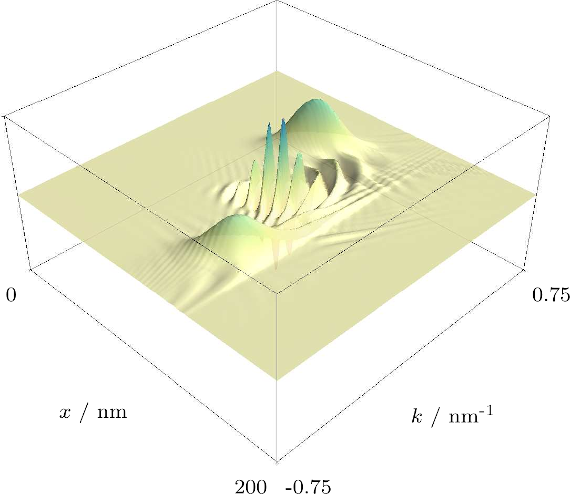 |
|
||||
BiographyJohann Cervenka was born in Schwarzach, Austria, in 1968. He studied electrical engineering at the Technische Universität Wien, where he received the degree of Diplomingenieur in 1999. He then joined the Institute for Microelectronics at the Technische Universität Wien and received his PhD in 2004. His scientific interests include three-dimensional mesh generation, as well as algorithms and data structures in computational geometry. |
|||||
Validation of the Deterministic Wigner Method
During the development of modern and future electronic devices, quantum mechanical effects exhibited in carrier transport frequently have to be accounted for. In cases such as these, the Wigner formalism presents a convenient formulation in phase space, thereby allowing many classical notions and concepts to be reused.
In cases where physical quantities vary over many orders of magnitude in phase space, deterministic methods are the only possible approach because stochastic methods lack the necessary precision.
In our deterministic method, the critical discretization of the diffusion term is performed through the utilization of an integral formulation of the Wigner equation. The developed method describes the time evolution of the solution as a superposition of fundamental wave packets.
The Wigner methodology is often validated by using wave packets, as the Wigner methodology describes not only spatial dependence, but also dependence in k-space in a comfortable way. Here, the ability of handling quantum mechanical effects is shown by the evolution of correlated wave states. The results are validated by comparison with their independent counterpart.
Fig. 1 shows the Wigner function in phase space of two independent wave packets. Two initially Gaussian packets move with the same speed to the right. The figure depicts the situation after the right packet has been reflected by a barrier.
In Fig. 2, the evolution of two Gaussian wave packets, identical to the former but with superposed distribution functions, is calculated. In contrast to the former, a third oscillatory packet in between arises in the Wigner representation. Here also, the right packet has passed the barrier. Though the middle one has not yet passed the barrier, the effects of the barrier are still felt.
Strict limits on the resolution in k-space have to be satisfied to properly resolve oscillatory behavior. These bounds may represent a challenge for the solution, which has to be analyzed in further work.

Fig. 1: Wigner function of two independent wave packets moving with the same speed. The right packet was reflected by a barrier.

Fig. 2: Wigner function of two correlated wave packets moving with the same speed. The right packet was reflected by a barrier. The correlation term in between did not pass the barrier.


